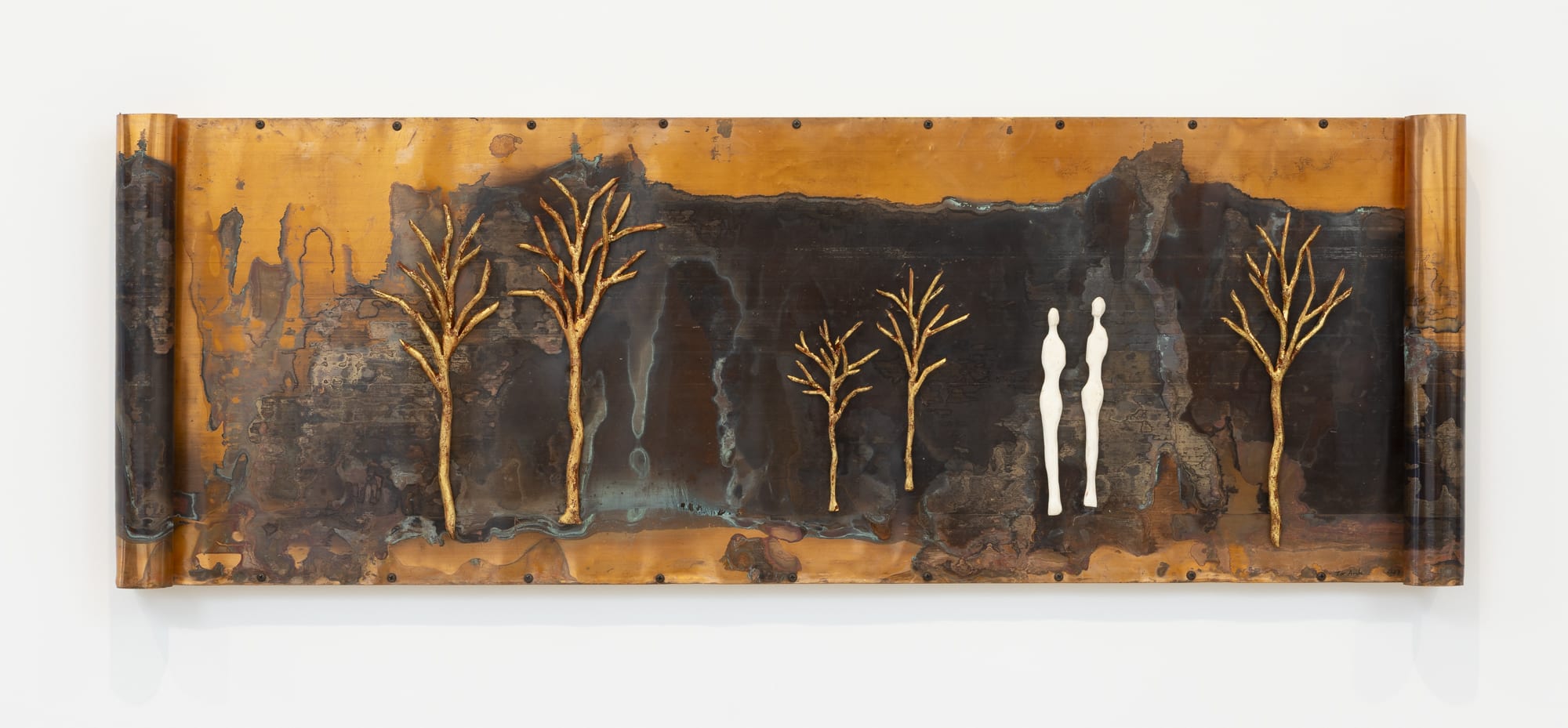TOR ARCHER
NATURAL INFLUENCE at Scott Richards Contemporary Art
by DeWitt Chang
October 15, 2025
Read the full review on Squarecylinder.com
Figurative sculpture is associated by most people with the classical marble figures originated by the Greeks, continued by the Romans, and later revived and carried forward in the Italian Renaissance. These realistic statues formed a tradition encompassing both mythological idealization and commemorative realism that lasted into the modern era. However, before the ancient Greeks adopted marble, so perfect for depicting human flesh, they employed the ruder substance of wood. Xoana (singular xoanon, from the Greek, ‘to scrape’) were archaic cult effigies, roughly hewn from trees sacred to these deities, e.g. olive, pear, and oak.

This bit of arcane art history highlights the connection between the plant kingdom and the supernatural realm of gods — or, more broadly, the transcendent and botanical worlds, a link that California sculptor Tor Archer explores in welded metal sculptures. Using contemporary materials, the artist combines the human, the plant, and the divine worlds.
Archer grew up in Santa Barbara, California in an artistic family, and began his career by rough-cutting wood for his mother’s carved sculptures. “I was rather content being outside with mallet and chisel, removing wood, which I found to be a meditative process” he explained. At his mother’s suggestion, he began creating works on his own, specializing in birds, until the figure emerged as his subject during his college years. Since then, Archer’s interest in the expressive possibilities of other materials, in religion, spirituality and mythology, as well as in the natural environment have led to a body of work that evokes a premodern unity with nature expressed in contemporary terms. His use of the female figure as a symbol for nature may seem at best a cliché to modernist aesthetic and political sensibilities — everyone knows about the objectification of muses and nudes in art history. But the artist’s still, symmetrical icons hark back to pre-industrial sensibilities that we would do well to respect.
“Natural Influence” consists of seven standing figures wrought in patinated bronze, copper, and steel. Two of the works are life-sized, and the other five are about half that scale. All stand atop rectangular marble or limestone plinths or bases. The vertical figures at different scales make you feel like you are in a sacred grove or clearing in a forest, or a temple, the columns of which resemble tree trunks. The hollow, metal-sheathed figures look like interwoven roots and tendrils that have grown into or around the human model, now rendered invisible. “Botanical Muse” (2023-25) and “Whirlwind” (2025), the two life-sized figures, depict female forms standing rigidly, absent their arms, their feet transformed into roots, and their heads as oval forms that are as devoid of features as Giorgio di Chirico’s mute metaphysical mannequins.

The smaller “Geologic Torso” (2025) repeats the standing woven-shell nude but omits the head and the root-ball feet so that it suggests an unearthed artifact. To the four smaller figures, Archer adds tree branches and roots fabricated from copper. The goddess figure or “Forest Temple” (2023) is swathed in wrappings, mummy-style, or composed of stratigraphic layers, like a fossil, in a small enclosure of saplings stripped of foliage. Are the slender trees there for support or to provide magical protection? Both, it would seem. “Arboreal Growth” (2023) and “Woven Torso” (2021) present armless, headless and legless torsos that merge with plant life. In the former, a tree grows from the figure’s neck; in the latter, the tangle of branches seems to permeate and strengthen the ‘mud’ of the torso. “Tree in Hand” (2025), one of three pieces with that title, replaces the human figure with a relaxed open hand — derived from a Buddhist mudra, or ritual gesture — holding a small bare tree, perhaps inspired by the artist’s time spent balancing his metalworking with gardening.

Tor Archer. "Shinrin-roku" (Forest Bathing)
Also included are several wall pieces that mimic codices or scrolls protected by museum vitrines. The juxtaposition of Archer’s stylized nature goddess — here rendered in 2D as simplified biomorphic shapes — with invented (or appropriated) magical/alchemical diagrams that suggest mysterious devotional narratives. In fact, the nine panels comprising “Book of Hours” are inspired by the medieval books of hours, horai in Latin, intended for daily use by devout lay persons. “Shinrin-roku,” or “forest bathing,” is based on the Japanese practice of relaxing in nature and imbibing the beneficial compounds contained in plants. John Muir’s famous “walking cure” of mindful sauntering is new again – or was never old.
The exhibition continues through October 25, 2025.


